
Belait District, or simply Belait, is the largest as well as the westernmost district in Brunei. It has an area of 2,727 square kilometres (1,053 sq mi) and the population of 69,062 as of 2016. The administrative town is Kuala Belait, located at the mouth of the Belait River. The district is commonly associated with the oil and gas industry of the country, mainly concentrated near the town of Seria.

Tutong District or simply Tutong is one of the four districts of Brunei. It has an area of 1,166 square kilometres (450 sq mi); the population was 48,313 in 2016. The administrative town is Pekan Tutong. It is home to Tasek Merimbun, the country's largest natural lake.

The Kedayan are an ethnic group residing in Brunei, Federal Territory of Labuan, southwest of Sabah, and north of Sarawak on the island of Borneo. According to the Language and Literature Bureau of Brunei, the Kedayan language is spoken by about 30,000 people in Brunei, and it has been claimed that there are a further 46,500 speakers in Sabah and 37,000 in Sarawak. In Sabah the Kedayan mainly live in the cities of Sipitang, Beaufort, Kuala Penyu and Papar. In Sarawak the Kedayans mostly reside in Lawas, Limbang, Miri and the Subis area. The Kedayan people are also regarded as a sub-ethnic group of the Klemantan Dayak people.
The culture of Brunei is strongly influenced by Malay cultures and the Islam. The culture is also influenced by the demographic makeup of the country: more than two-thirds of the population are Malay, and the remainder consists of Chinese, Indians and indigenous groups such as Muruts, Dusuns and Kedayans. While Standard Malay is the official language of Brunei, languages such as Brunei Malay and English are more commonly spoken.
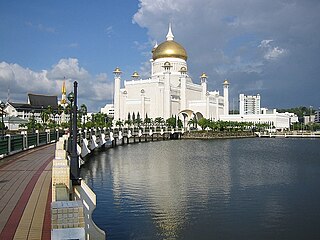
Islam is Brunei's official religion, 82.70 percent of the population is Muslim, mostly Sunnis of Malay origin who follow the Syafi'e school of thought. Most of the other Muslim groups are Malay Kedayans, local Chinese and Dayak Iban converts.
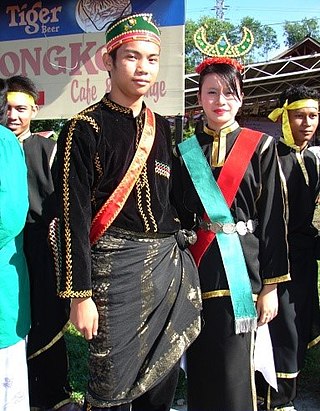
Bisaya is an indigenous people from the northwest coast of East Malaysia on the island of Borneo. Their population is concentrated around Beaufort, Kuala Penyu, Menumbok, Sipitang, Labuan Federal Territory and in Limbang District, Sarawak. The Bisaya tribe has many similarities with the Dusun Tatana tribe, especially in terms of language. It is evident that some of their dialogical language conversations are almost identical if they have a dialogue with each other. Nowadays the Bisaya living in Sabah are Muslim, while the Bisaya living in Sarawak are mostly Christian. In Brunei, they are referred as Dusun, Jati Dusun and Bisaya. The Bisaya is closely related, linguistically, with the Tatana Dusun of Kuala Penyu, Sabah.
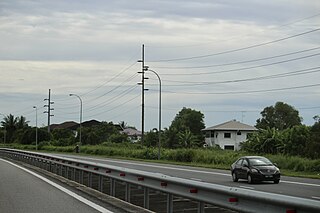
Mumong is a residential suburb of Kuala Belait, the principal town of Belait District, Brunei. It comprises the original Mumong settlement, as well as the Mumong public housing estate of the Landless Indigenous Citizens' Housing Scheme. However, it officially consists of two village subdivisions, namely Mumong 'A' and Mumong 'B', which are under the mukim of Kuala Belait.

There are a number of languages spoken in Brunei. The official language of the state of Brunei is Standard Malay, the same Malaccan dialect that is the basis for the standards in Malaysia and Indonesia. This came into force on 29 September 1959, with the signing of Brunei 1959 Constitution.
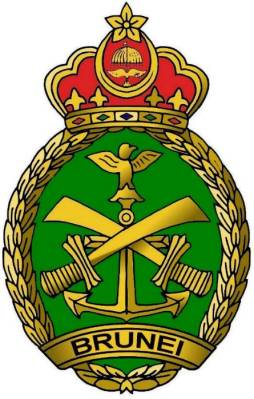
The Royal Brunei Armed Forces (RBAF); Malay: Angkatan Bersenjata Diraja Brunei, (ABDB), is the collective term for the military forces of the sultanate of Brunei Darussalam. They consist of the Royal Brunei Land Forces (RBLF), the Royal Brunei Navy (RBN), and the Royal Brunei Air Force (RBAirF).

The demographic features of Brunei include population density, ethnicity, education level, health of the populace, economic status, religious affiliations and other aspects of the population. Like neighbouring countries, Brunei is a Malay-dominated country. Many cultural and linguistic differences make Brunei Malays distinct from the larger Malay populations in nearby Malaysia and Indonesia, even though they are ethnically related and share the Muslim religion.

Bruneian Malays are a native Malay ethnic group that lives in Brunei, the federal territory of Labuan, the southwestern coast of Sabah and the northern parts of Sarawak. The Bruneian Malays are a subgroup of the larger ethnic Malay population found in the other parts of the Malay World, namely Peninsular Malaysia and the central and southern areas of Sarawak including neighbouring lands such as Singapore, Indonesia and Southern Thailand, having visible differences especially in language and culture, even though they are ethnically related to each other and follow the teachings of Islam. All Bruneian Malays who are born or domiciled in East Malaysia even for generations before or after the independence of the states of Sabah and Sarawak from the British Empire through the formation of Malaysia in 1963 are also considered Malaysian Malays in the national census and were in the same status like the Malaysian Malays domiciled in Peninsular Malaysian states and the central and southern parts of Sarawak. They are also defined as a part of the Bumiputera racial classification together as a subgroup within the Malaysian Malay ethnic population along with the Kadazan-Dusuns, Ibans, Malaccan Portuguese and the Malaysian Siamese.
The Tutong language, also known as Basa Tutong, is a language spoken by approximately 17,000 people in Brunei. It is the main language of the Tutong people, the majority ethnic group in the Tutong District of Brunei.
Sarawak's population is very diverse, comprising many races and ethnic groups. Sarawak has more than 40 sub-ethnic groups, each with its own distinct language, culture and lifestyle. This makes Sarawak demography very distinct and unique compared to its Peninsular counterpart.

The population of Sabah stands at 3,418,785 according to the 2020 Malaysian census. This makes Sabah the third most populous state in Malaysia. It also has the highest non-citizen population at 810,443. Although Malaysia is one of the least densely populated countries in Asia, Sabah is particularly sparsely populated. Most of the population is concentrated along coastal areas, with towns and urban centers seeing the most population growth. The population of Sabah in 1970 was 653,604, with both the state and its neighbour Sarawak having about the same number of foreign nationals. In 1980, the state saw a sharp rise in its population with the arrival of almost a million refugees fleeing the Moro conflict in neighbouring southern Philippines. Around the same time, large numbers of legal workers from both Indonesia and the Philippines also arrived in Sabah, drawn by the economic boom in its primary sector. In 1992, Sabah's population increased to over 1,734,685, then to 2,468,246 in 2000. By 2010, this grew to 3,117,405. Sabah has 900,000 registered migrant workers in agriculture, plantations, construction, services, and domestic work. The total number of illegal immigrants and refugees Most of these illegal immigrants are believed to have been categorized as "other bumiputera" in the national statistics. Sabah has also seen an increase in the number of expatriates, mostly from China, Taiwan, South Korea, Japan, Australia, and Europe. In the near term, the population is expected to grow from increasing interracial marriages and migration.
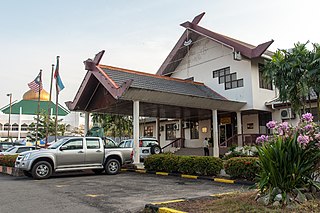
The Beaufort District is an administrative district in the Malaysian state of Sabah, part of the Interior Division which includes the districts of Beaufort, Keningau, Kuala Penyu, Nabawan, Sipitang, Tambunan and Tenom. The population of Beaufort is composed mainly of Bisaya, Brunei Malays, Kadazan-Dusuns, Lun Bawang/Lun Dayeh, Muruts and Chinese. Bisaya are the majority ethnic, and the population is scattered around the town. The capital of the district is in Beaufort Town.
Public housing in Brunei comprises government development programmes which aim to provide ownership of land or homes to the citizens of Brunei. They are managed by the Housing Development Department, a government department under the Ministry of Development. There has been three main public housing programmes in the country, namely the National Housing Scheme, the Landless Indigenous Citizens' Housing Scheme and the National Resettlement Scheme.
The Tutong people are an ethnic group native to Brunei, mainly in Tutong District. They traditionally speak the Tutong language. They are officially recognised as one of the seven ethnic groups of the Bruneian Malay race.

The Bruneian nationality law governs the issues of citizenship and nationality of Brunei. The law regulates the nationality and citizenship status of all people who live in Brunei as well as all people who are of Bruneian descent. It allows the children of expatriates, foreigners as well as residents in Brunei to examine their citizenship status and if necessary, apply for and obtain citizenship of Brunei.












